Are you curious to know what is the order of all iPhones? Want to learn about iPhone history? If yes, you’ve landed at the right place. From the original iPhone in 2007 to the iPhone 16 in 2024, Apple has launched 23 different iPhone models until this date. Unarguably, the iPhone is one of the most revolutionary devices that completely changed the world of smartphones. In this guide, we’ll talk about every iPhone release in chronological order so you get to know about all models released so far, including the latest iPhone models. Without any ado, let’s begin!
iPhone Models in Order
- iPhone– June 29, 2007
- iPhone 3G– July 11, 2008
- iPhone 3GS– July 19, 2009
- iPhone 4- July 24, 2010
- iPhone 4S- October 14, 2011
- iPhone 5- September 21, 2012
- iPhone 5S & iPhone 5C- September 20, 2013
- iPhone 6 & iPhone 6 Plus- September 19, 2014
- iPhone 6S & iPhone 6S Plus- September 25, 2015
- iPhone SE- March 31, 2016
- iPhone 7 & iPhone 7 Plus- September 16, 2016
- iPhone 8 & iPhone 8 Plus- September 22, 2017
- iPhone X: November 3, 2017
- iPhone XS & iPhone XS Max- September 21, 2018
- iPhone XR- October 26, 2018
- iPhone 11, 11 Pro, 11 Pro Max- September 20, 2019
- iPhone SE 2- April 24, 2020
- iPhone 12, 12 Mini, 12 Pro, 12 Pro Max- October 23, 2020
- iPhone 13, 13 Mini, 13 Pro, 13 Pro Max- September 13, 2021
- iPhone SE 3- March 18, 2022
- iPhone 14, 14 Plus, 14 Pro, 14 Pro Max- September 16, 2022
- iPhone 15, 15 Plus, 15 Pro, 15 Pro Max- September 22, 2023
- iPhone 16, 16 Plus, 16 Pro, 16 Pro Max- September 9, 2024
Let’s get to know the complete rundown of all iPhone models released until 2024.
1. iPhone
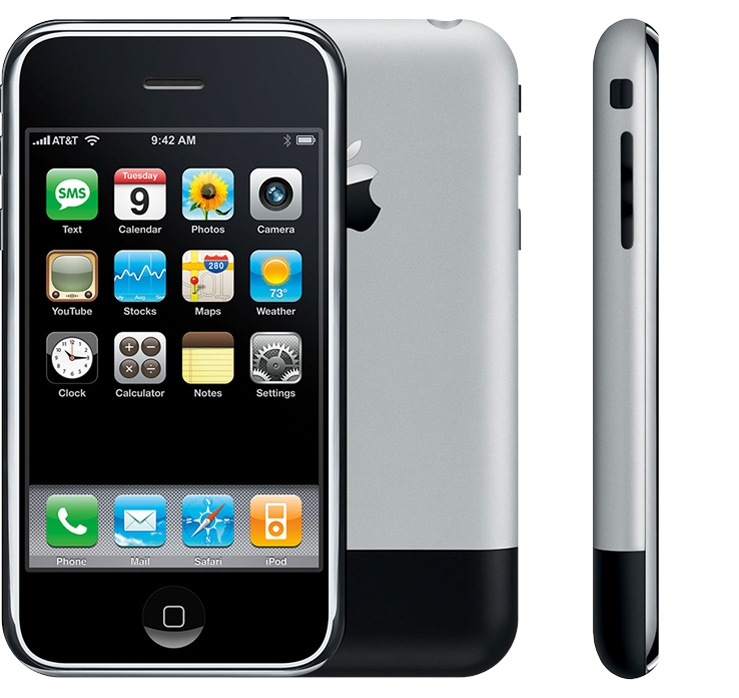
- First iPhone Release Date: June 29, 2007
The first iPhone was released on June 29, 2007, and it changed the mobile industry. The original iPhone was marketed as a single device featuring a widescreen iPod with touch controls, a mobile phone, and breakthrough internet capabilities. That means, an iPod, a phone, and an internet communicator, all in one device. The first iPhone only had a 3.5-inch display, a 2MP rear camera, a max 16GB storage, and only 128MB of RAM. There was no support for third-party apps, copy-and-paste text, or MMS. Yes, there was no App Store and you could only access web apps.
At present, the original iPhone may appear far off from today’s standards, but it was revolutionary on its own. It ditched the physical keyboards and keypads, which all mobile phones had at that time. In fact, it was the first iPhone that made touchscreens a thing. Some people were mocking Apple for introducing the iPhone thinking it would never succeed. Little did they know an iPhone would change the tech industry forever.
2. iPhone 3G
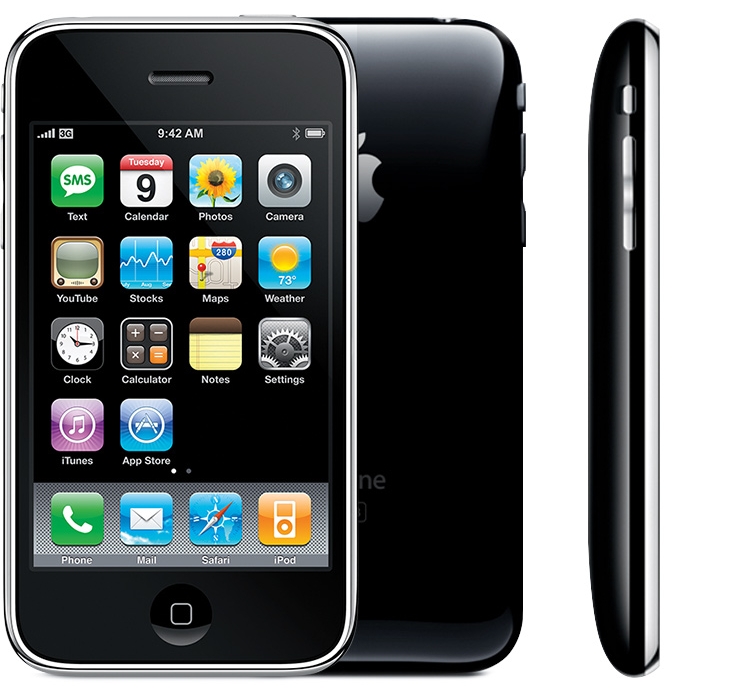
- iPhone 3G Release Date: July 11, 2008
On July 11, 2008, Apple released the second iPhone, the iPhone 3G with the same 3.5-inch display, 2MP camera, 16GB storage, and 12MP RAM. That said, it wasn’t the same as the original iPhone. As the name suggests, the iPhone 3G replaced the Edge speeds on the original iPhone with the 3G connectivity. Also, it introduced the App Store so users could finally download third-party apps. Unarguably, the addition of the App Store was a huge step and it began a whole new era of apps, dramatically changing how we use our iPhones now.
3. iPhone 3GS
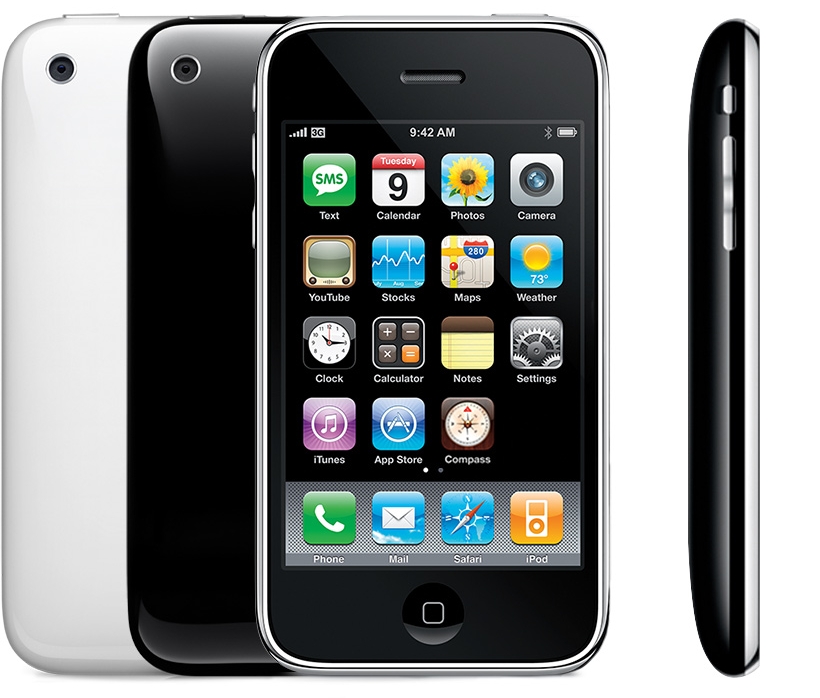
- iPhone 3GS Release Date: June 19, 2009
When Apple allowed downloading third-party apps on iPhones, it realized that the 16GB storage won’t suffice. On June 19, 2009, Apple launched the iPhone 3GS with a specs bump with double the storage and RAM of the original iPhone. The iPhone 3GS featured 32GB storage and 256MB RAM to make room for all the apps users could now download from the App Store. In addition, the iPhone 3GS had a new 3-megapixel autofocus camera for better-looking pictures. It also had a built-in digital compass and popular accessibility features like VoiceOver.
4. iPhone 4
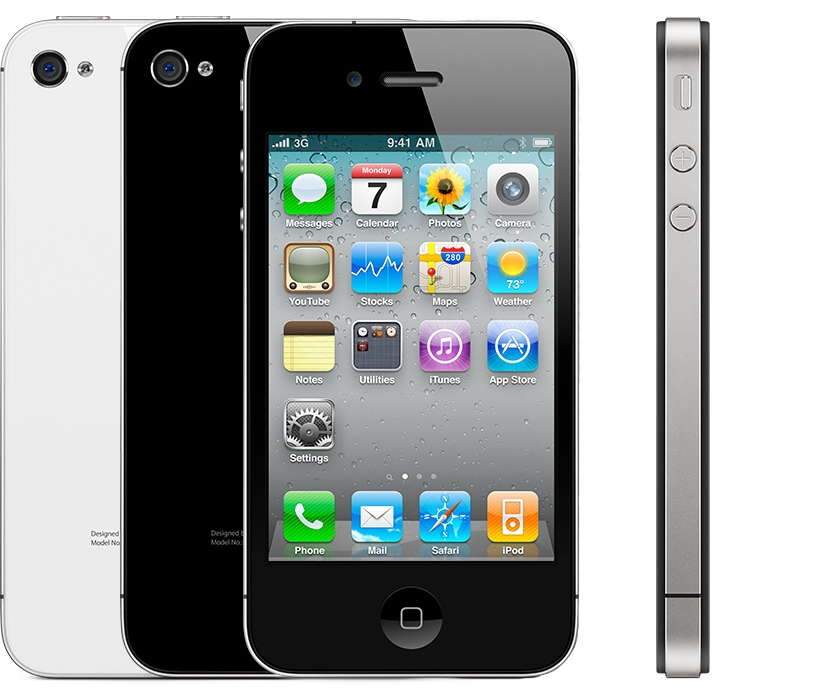
- iPhone 4 Release Date: June 4, 2010
Released on June 4, 2010, the iPhone 4 holds great importance in shaping the future of iPhones. Although it retained the 3.5-inch display as its predecessors, Apple upgraded the screen with a Retina display with 326 ppi (pixel per inch) density for improved readability. That’s not the only major change. The introduction of the front-facing camera and FaceTime were among the standout features of the iPhone 4. Users could take selfies and make video calls between Apple devices using the internet connection.
In addition, the iPhone 4 had an upgraded 5MP lens with LED flash that became a gold standard for mobile photography at that time. Besides a nice jump in the specs, Apple made some big hardware design changes to its iPhone. While the first three iPhone models were made with plastic and had a rounded design, the iPhone 4 came with a new glass & stainless steel design with flatter edges, a feature that we still see on modern iPhones.
5. iPhone 4S
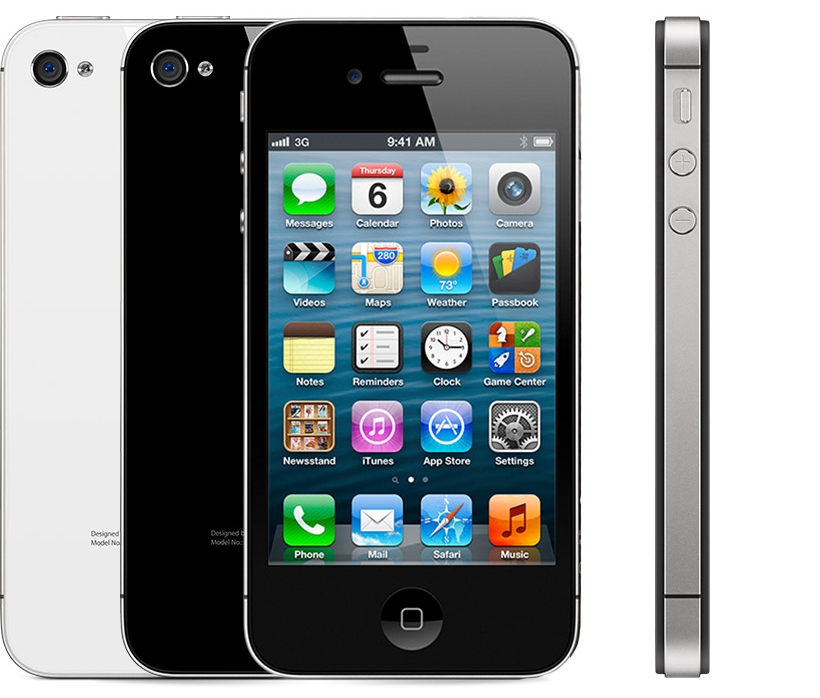
- iPhone 4S Release Date: October 14, 2011
Rolled out in October 2011, the iPhone 4S was the first iPhone that Apple began selling in the fall, and since then Apple has continued to follow this trend. The iPhone 4S took things a step further with the debut of Siri. Apple’s virtual assistant finally made its way to the Apple ecosystem, giving us brand-new ways to get things done on an iPhone.
In addition, the iPhone 4 added an 8MP camera and 1080p video recording, which were big milestones. In fact, they set the camera standard for several more years. To accommodate bigger file sizes, Apple also maxed out the storage to 64GB. Well, things didn’t end here. Apple also launched several major software like iCloud, iMessage, and more with its 2011 iPhone model.
6. iPhone 5
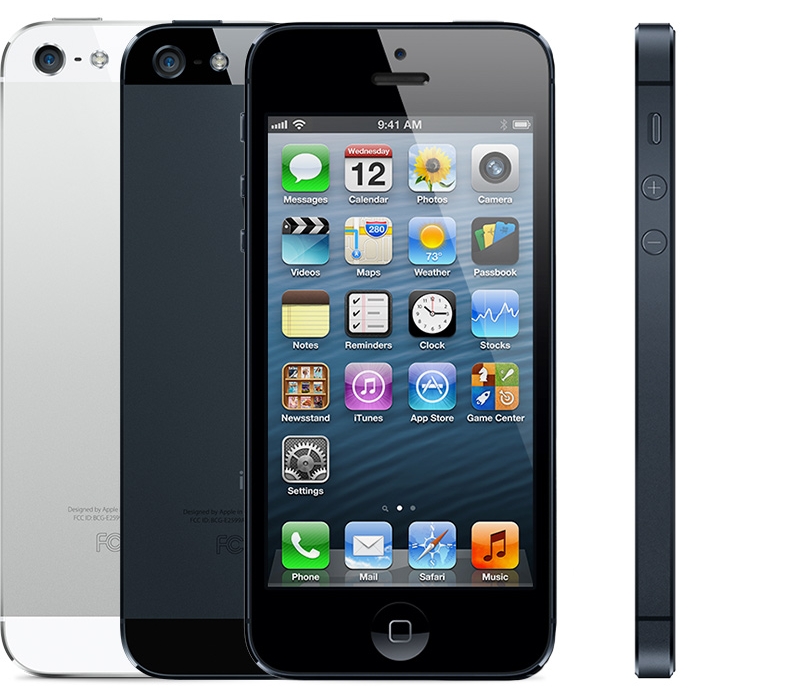
- iPhone 5 Release Date: September 21, 2012
Just like the iPhone 4, the iPhone 5 brought some major changes. Launched on September 21, 2012, the iPhone 5 was the first iPhone to support 4G technology, a larger 4-inch screen, and an HD FaceTime camera. Also, it was the iPhone 5 model when Apple switched from the previous 30-pin charging port to the Lightning connector, which became a staple for iPhones for the next 10 years.
Apple also introduced the iPhone 5 in an all-new aluminum design that was remarkably lightweight. Thanks to the compact & comfortable design, 4G technology, and a larger 4-inch display, the iPhone 5 instantly became a hit and still remains a fan-favorite.
7. iPhone 5S & iPhone 5C
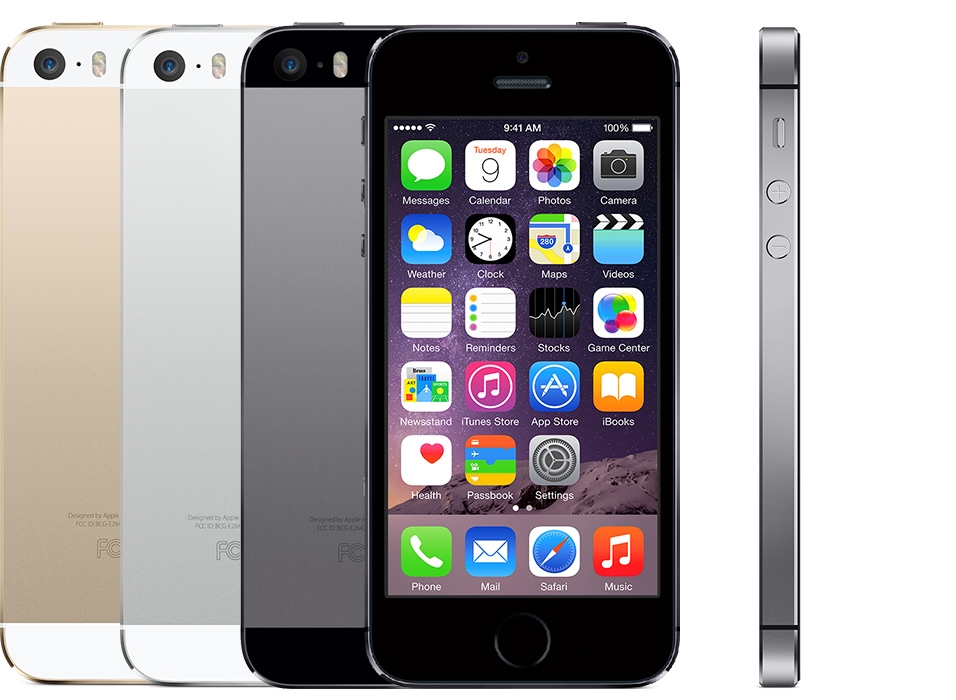
- iPhone 5S and 5C Release Date: September 20, 2013
It was with the iPhone 5S & 5C in 2013 that Apple released two different iPhone models at once. The iPhone 5S would be the prime attraction and the flagship model, while the iPhone 5C was a more budget-friendly option that made a few compromises in the features.
The iPhone 5S was the first iPhone to feature a Touch ID, allowing you to unlock your phone by just placing a finger on the Home Button. This became a standard in future iPhone models until the iPhone X launched in 2017. Alongside the Touch ID, the iPhone 5S also arrived with an A7 processor, an improved 8MP camera, True Tone flash, and additional new camera modes.

The iPhone 5C was marketed as a more affordable option so it featured an entirely plastic body and a Home Button. It was the first time that Apple launched an iPhone in some bold & bright color options. However, the iPhone 5C looked a little cheap and lacked Apple’s charm. As a result, it didn’t gain a lot of popularity.
8. iPhone 6 and 6 Plus

- iPhone 6 Release Date: September 19, 2014
With the iPhone 6 and 6 Plus, Apple began the trend of launching an iPhone in two different screen sizes. The iPhone 6 had a 4.7-inch display, whereas the iPhone 6 Plus had a larger 5.5-inch display. In 2014, Apple ditched the boxy design seen in the previous three generations and switched to a thinner, unibody aluminum design.
However, the thinner design also sparked the “bendgate” scandal where some users discovered the iPhone 6 would bend if enough pressure was applied. That said, the iPhone 6 series was still very successful and gained a lot of positive reviews. The iPhone 6 & 6 Plus were the first iPhones to support Apple Pay and 128GB storage options.
9. iPhone 6S and 6S Plus
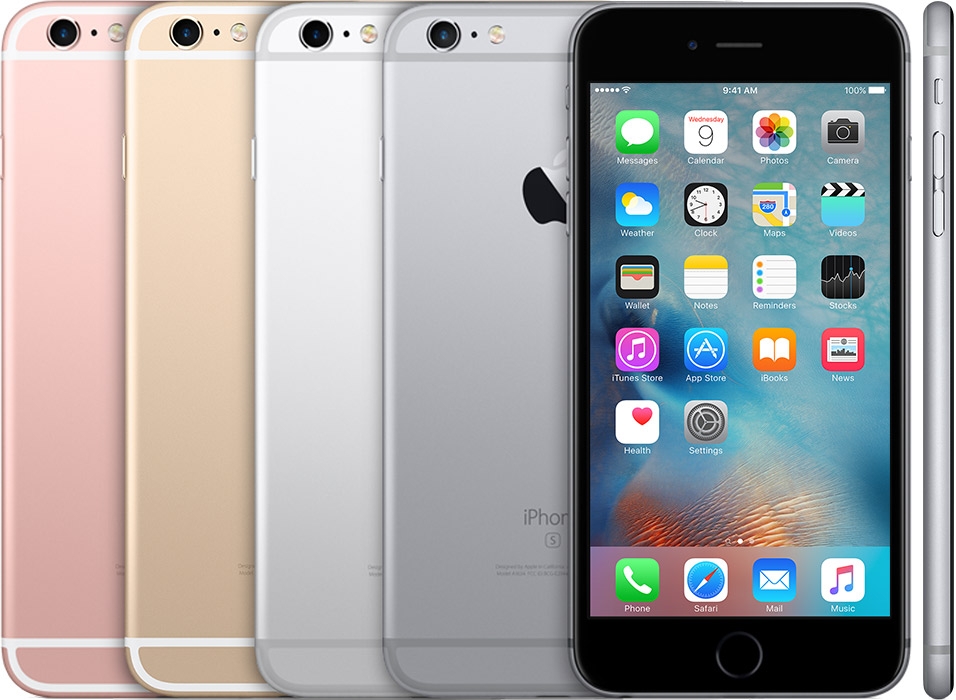
- iPhone 6s Release Date: September 9, 2015
In 2015, Apple launched the iPhone 6s and 6s Plus with the same 4.7-inch and 5.5-inch displays. In terms of looks and design, the iPhone 6s models look identical to its predecessors. That said, it was the first time Apple launched Rose Gold color, a beautiful metallic pink finish that was the fan-favorite of many iPhone lovers. The highlighting feature of the iPhone 6s was the 3D Touch which allows you to apply pressure on the display to see additional options, such as quick action menus on app icons on the home screen.
The iPhone 6s series is also when Apple introduced a 12MP primary camera, which remained the standard until the iPhone 14 Pro in 2022. Also, the iPhone 6s was the first iPhone with 4K video capabilities and Live Photos support.
10. iPhone SE

- iPhone SE (1st Gen) Release Date: March 21, 2016
The first iPhone SE (Special Edition) is known to be a milestone in iPhone’s history. Apple showed the world that it can make a budget-friendly iPhone that doesn’t look or feel cheap, unlike the iPhone 5C.
The iPhone SE had the capabilities of the iPhone 6S packed in the chassis of an iPhone 5S. It had a 4-inch display which allows for one-handed use, along with other features like a 12MP camera, 4K video recording, Live Photos, and more. The iPhone SE defined the idea of a perfect value-for-money and compact iPhone for many people.
11. iPhone 7 and 7 Plus
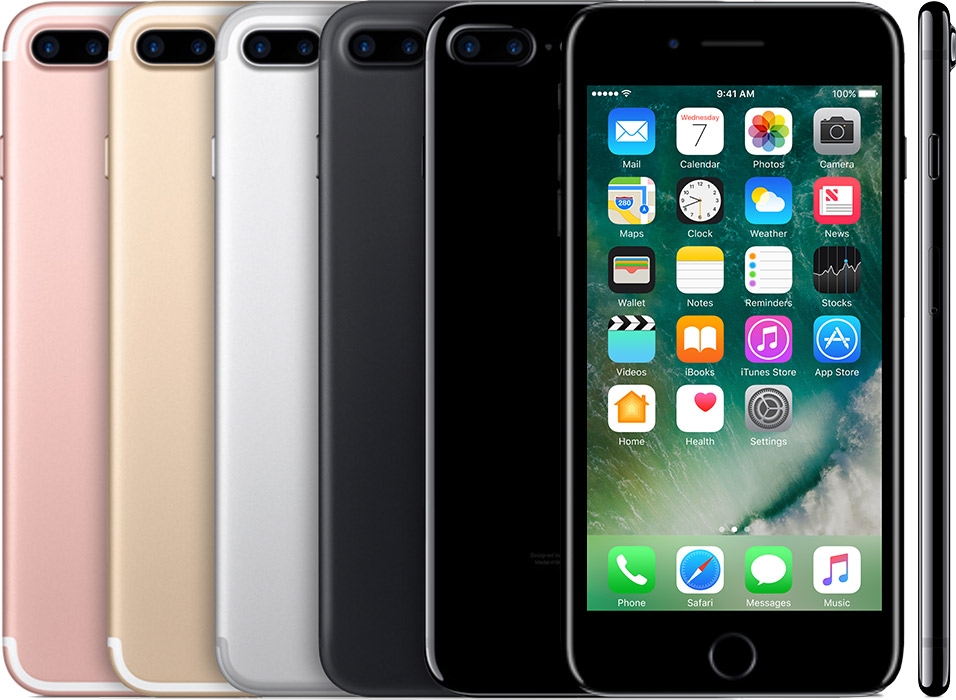
- iPhone 7 Release Date: September 16, 2016
The iPhone 7 and 7 Plus launched in September 2016 with a big and controversial turning point- the death of the headphone jack on iPhones. Users could experience audio through the Lightning port or go for the newly launched AirPods. Well, that wasn’t all. The iPhone 7 and 7 Plus introduced a sleeker design and they became the first iPhones with an IP67 water-resistance. Talking about the iPhone 7 Plus, it was the first iPhone to offer a dual-camera setup on its rear panel. The 12 MP main camera was paired with a 12 MP Telephoto camera for macro photography. To keep up with the camera upgrades, Apple introduced a 256GB option.
Also, Apple added the Portrait mode on the iPhone 7 & 7 Plus, which allowed users to capture professional-looking portraits without the need for a DSLR camera. Later on, it became a standard on all mobile phones. The iPhone 7 series was available in a stunning and shiny Jet Black color option, which was an absolute favorite for many users, including myself. That gorgeous jet black is never seen again after the iPhone 7.
12. iPhone 8 and 8 Plus
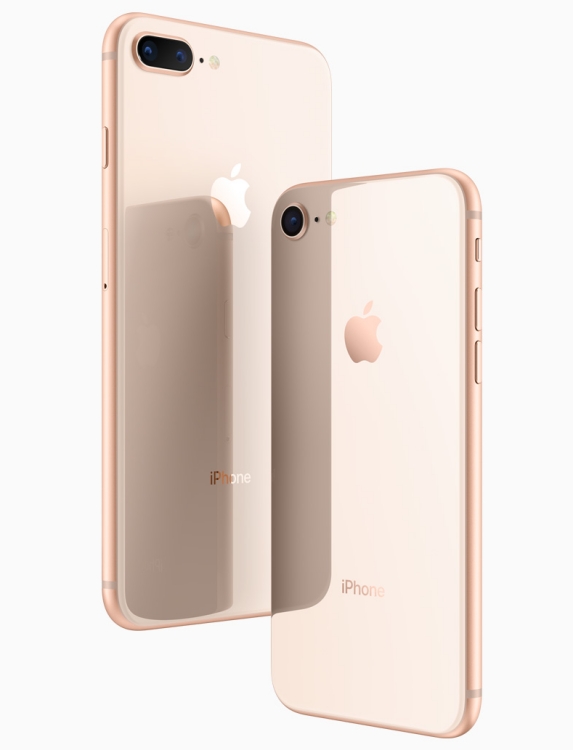
- iPhone 8 Release Date: September 22, 2017
The design of the iPhone 8 Series was largely inspired by the iPhone 7 series, but it brought some major improvements that helped it stand out on its own. First, it introduced a True Tone display. Second, a glass panel was added to the back panel which allowed wireless charging.
Yes, the iPhone 8 was the first iPhone to support wireless charging. Another major highlight of the iPhone 8 was Portrait Lighting which allowed users to change the lighting style for Portrait mode images so they look even more professional. Also, the iPhone 8 was the first iPhone with Augmented Reality support, which brought a massive change.
13. iPhone X

- iPhone X Release Date: November 3, 2017
To celebrate a decade of the iPhone, Apple launched the iPhone X in November 2017 which marked a new era in the iPhone’s history. After making subtle and small design changes for straight 10 years, Apple came up with a massive design change with the iPhone X and gained a lot of appreciation. It featured an iconic design that was significantly different from the prior models.
The iPhone X is extremely special because it marked the end of the Home Button era on the mainline iPhones. Rather than a Home Button with a Touch ID sensor, the iPhone X featured a Face ID sensor that lets you unlock your iPhone by scanning your face. Thanks to the removal of the Home Button, the iPhone X was the first full-screen iPhone with a 5.8-inch OLED Super Retina display.
14. iPhone XS and XS Max

- iPhone XS Release Date: September 12, 2018
The iPhone XS brought minimal improvements over the previous iPhone X. That said, there were some decent upgrades that made quite a difference. First, Apple started the trend of bigger smartphones with the introduction of a 6.5-inch display on the iPhone XS Max. The iPhone XS retained the 5.8-inch display from its predecessor.
The iPhone XS and XS Max also brought other improvements, including faster Face ID, IP68 rating for better water resistance, faster download speeds with Gigabit LTE, and a 512 storage option. Also, the iPhone XS was the first iPhone with dual-SIM support. Apple added support for an eSIM along with a physical nano-SIM slot.
15. iPhone XR
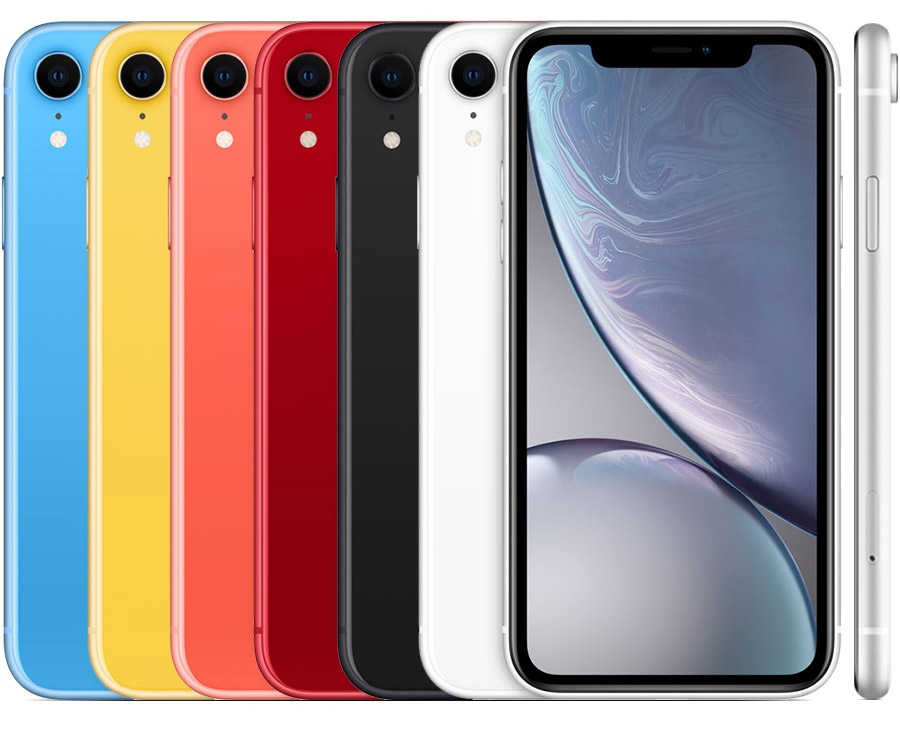
- iPhone XR Release Date: September 12, 2018
After a month of launching the iPhone XS and XS Max, Apple came up with the iPhone XR as 2018’s budget-friendly iPhone model. To come up with a cheaper version of the iPhone XS & XS Max, Apple had to cut down on some features to reduce the price. First, the iPhone XR has a 6.1-inch LCD display, rather than the OLED display found on the iPhone XS & XS Max. Second, the iPhone XR has a single camera and a reduced IP67 water-resistance rating.
The iPhone XR didn’t arrive with anything revolutionary. That said, it was the first iPhone to feature a 6.1-inch display size which has now become a norm for the iPhone. Thanks to the massive 6.1-inch display and a budget-friendly price tag, the iPhone XR became one of the most popular smartphones in 2019.
16. iPhone 11 Series
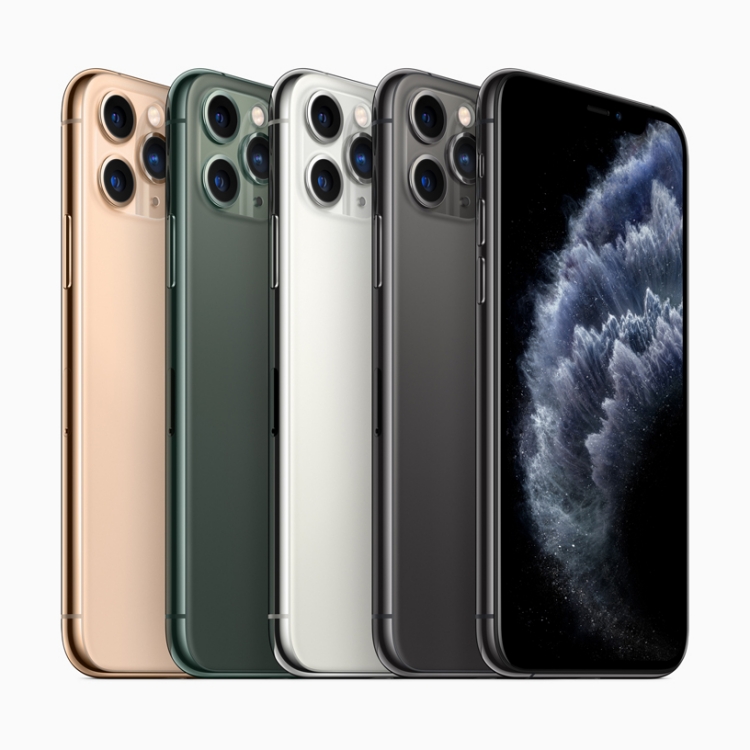
- iPhone 11 Release Date: September 20, 2019
For the first time, Apple introduced the three iPhones at once with the iPhone 11 series. The iPhone 11, 11 Pro, and 11 Pro Max brought the idea of a Standard, a larger Pro, and a flagship Pro Max model. The iPhone 11 Pro and 11 Pro Max marked the debut of the game-changing triple camera system with a main, an ultrawide, and a telephoto lens. Apple also made some much-needed upgrades like Super Retina XDR OLED displays and improved battery life.
The iPhone 11 Pro models paved the way for many iPhones to come in the next years. Though the cameras have become larger, the triple-camera layout remained the same even with the introduction of the iPhone 15 series in 2023.
17. iPhone SE 2
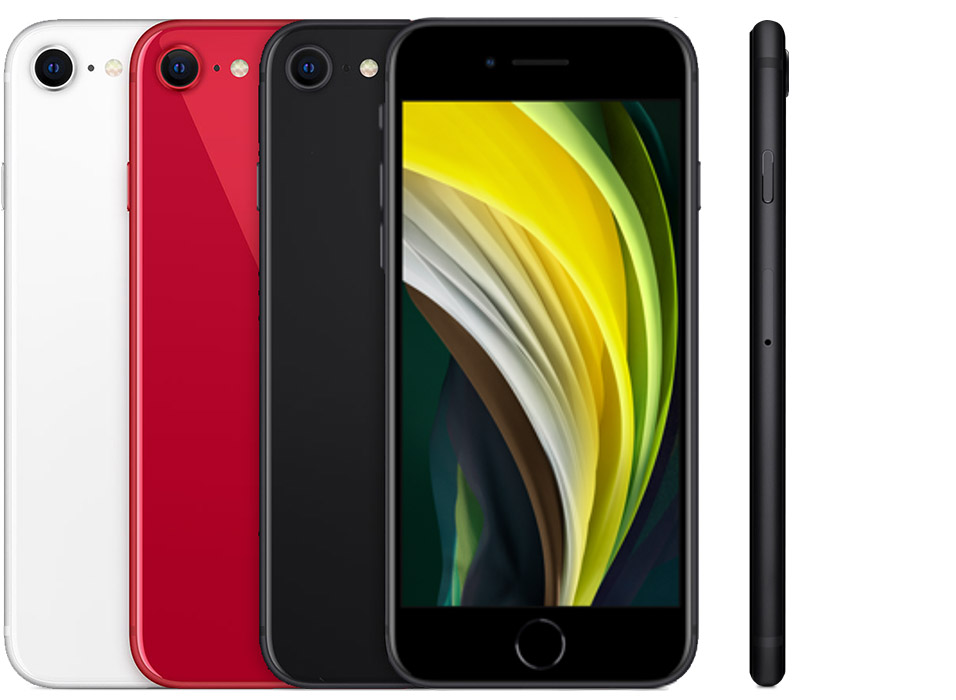
- iPhone SE (2nd Gen) Release Date: April 24, 2020
After four years of the first iPhone SE, Apple surprised everyone by launching an iPhone SE 2 in April 2020. The second-generation iPhone SE arrived with some huge improvements over the first middle. It featured a 4.7-inch screen with a Home button and Touch ID. Although the second model wasn’t as compact as the original one, it still appealed to users who prefer compact phones. It became popular as the iPhone Special Edition 2020.
The iPhone SE 2 was made from the recycled old chassis of the iPhone 8. Despite looking similar to the iPhone 8, the iPhone SE was powered by the same A13 chip as the iPhone 11 series for additional capabilities and improved performance.
18. iPhone 12 Series
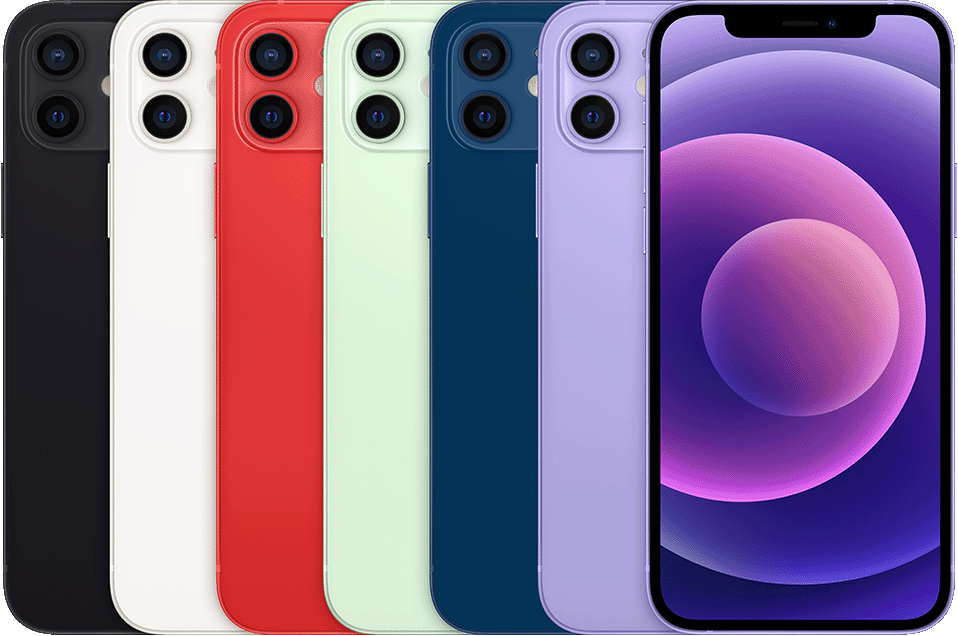
- iPhone 12 Release Date: October 23, 2023
For the first time ever, Apple launched four iPhone models at the same time- iPhone 12, iPhone 12 mini, iPhone 12 Pro, and iPhone 12 Pro Max. The iPhone 12 mini particularly grabbed a lot of attention because of its small size. With a 5.4-inch display, the iPhone 12 mini was the most compact iPhone offered by Apple. The iPhone 12 and 12 mini had dual rear cameras, whereas the iPhone 12 Pro and 12 Pro Max were equipped with a triple camera system.
Apart from the introduction of a compact iPhone, the iPhone 12 Series arrived with some really big changes. First, it marked the debut of 5G support and Apple’s MagSafe ecosystem on iPhones. The MagSafe system doubled up the wireless charging speed (from 7.5W to 15W) and opened up a new door of magnetic accessories like MagSafe cases, MagSafe chargers, MagSafe wallets, and more. That’s not all. It was the iPhone 12 Series with which Apple stopped providing a power adapter and wired earphones in the box. Many companies mocked Apple for removing the charger from the box, but later on, most brands followed suit.
19. iPhone 13 Series
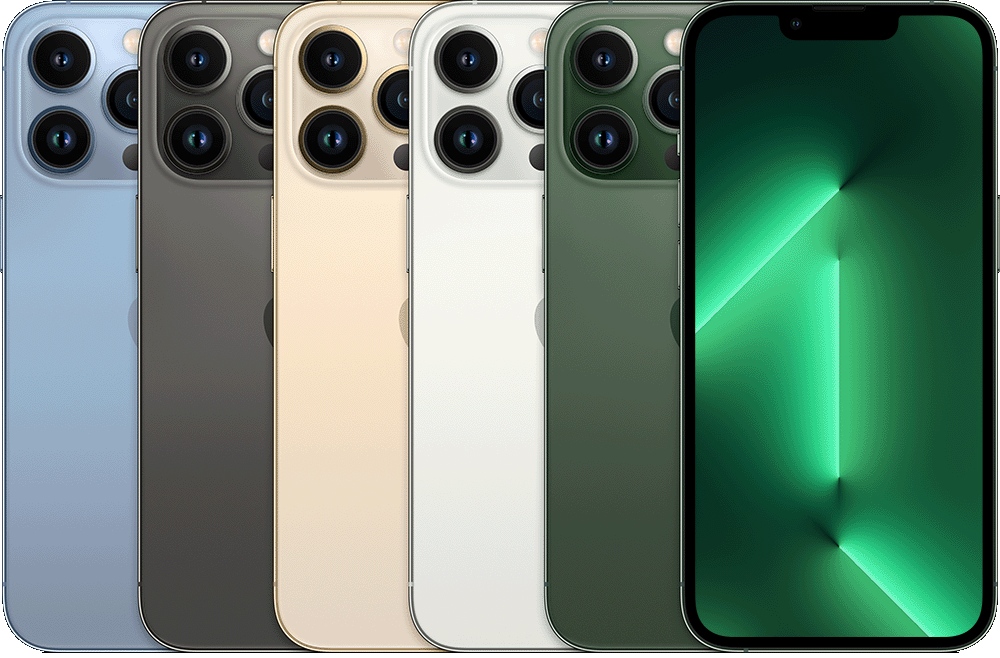
- iPhone 13 Release Date: September 24, 2021
In essence, the iPhone 13 models were similar to the iPhone 12 series. Apple launched four models- iPhone 13, 13 mini, 13 Pro, and 13 Pro Max. While the overall design remained the same, we saw a smaller notch and new color options. Also, the iPhone 13 Pro and 13 Pro Max were the first iPhones to feature a 120Hz ProMotion Display, which became a norm for future Pro models. Thanks to the higher adaptive refresh rate, scrolling, animations, and transitions became smoother. Also, the iPhone 13 Pro was the first iPhone to offer up to 1TB storage option.
The iPhone 13 series also arrived with some other notable changes like the A15 Bionic chip that brought massive improvement in the battery life, with up to 19 hours of video playback time. We also saw brand-new features for photography, like Cinematic Mode, which applies a depth-of-field effect to keep the objects in focus while applying a nice blur to the background or foreground. Also, the high-end iPhone 13 Pro models supported ProRes video which allows for raw 4K30 videos.
20. iPhone SE 3
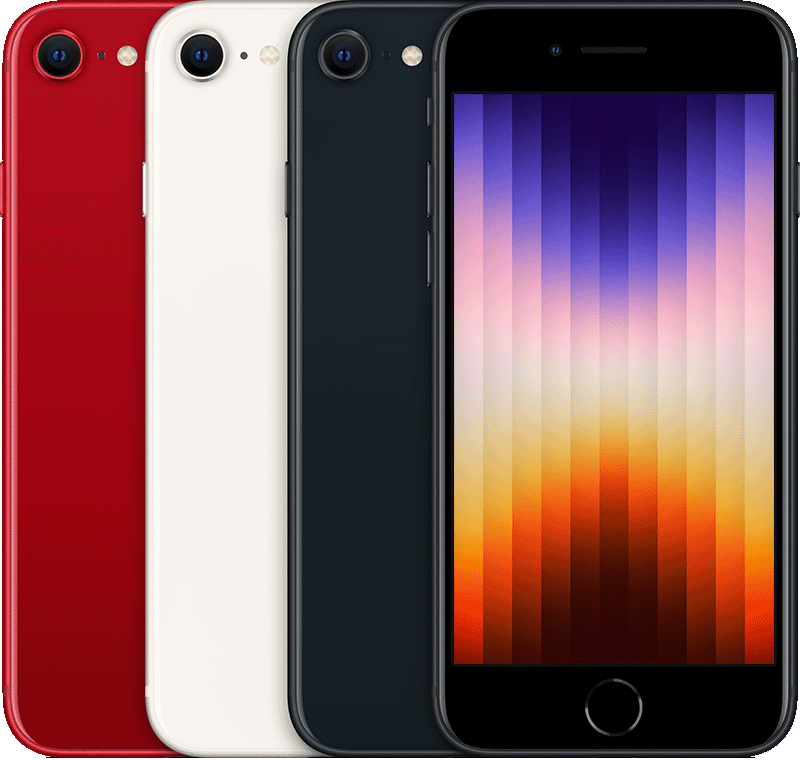
- iPhone SE (3rd Gen) Release Date: March 18, 2022
Launched in April 2022, the third-generation iPhone SE brought back the Home Button after five years. The iPhone SE 3 featured the same iPhone 8 body with a 4.7-inch display. This time around, Apple packed it with the A15 Bionic chip, which is the same as the iPhone 13 models. Additionally, it had 5G connectivity, an improved battery life, and some photography-centric features like Night Mode, Photographic Styles, and more.
At the moment, it’s unclear if Apple will release an iPhone SE 4 or not. If it comes, we’re likely to see an iPhone 14-inspired design, a big 6.1-inch display, a single 48MP camera, and an A16 Bionic chip.
21. iPhone 14 Series
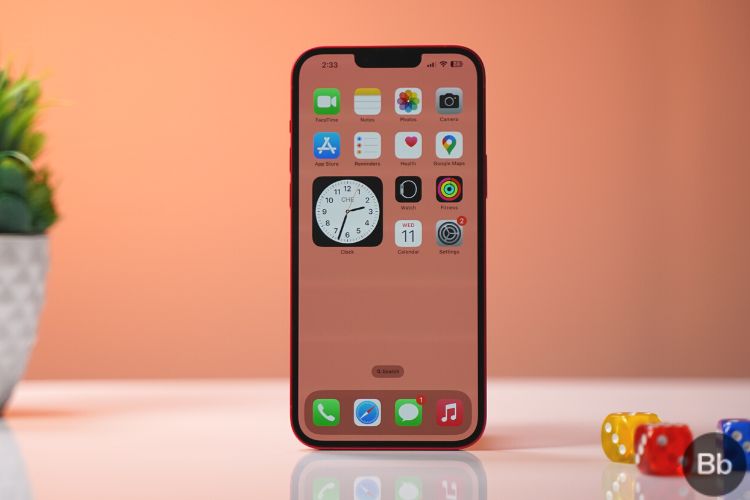
- iPhone 14 Release Date: September 16, 2022
With the iPhone 14 series, Apple continued to deliver four models at once, but this time, Apple replaced the Mini with a Plus model, which is the same size as the Pro Max. The iPhone 14 and iPhone 14 Plus borrowed most features from the iPhone 13, including the A15 Bionic chipset. It was the first time Apple launched a new iPhone with an older chip. The interesting upgrades were exclusive to the Pro models. The iPhone 14 Pro & 14 Pro Max made a star entry with an Always-On Display, a 48MP primary camera, and Dynamic Island which finally replaced the ugly notch debuted with the iPhone X.
All the iPhone 14 models also got new safety features like Emergency SOS via Satellite and Crash Detection. With the iPhone 14 lineup, Apple also eliminated physical SIM card trays in the United States and offered the eSIM option only. The iPhone 14 Pro models primarily influenced the direction of future iPhones, with Dynamic Island and 48MP cameras becoming a new baseline.
22. iPhone 15 Series
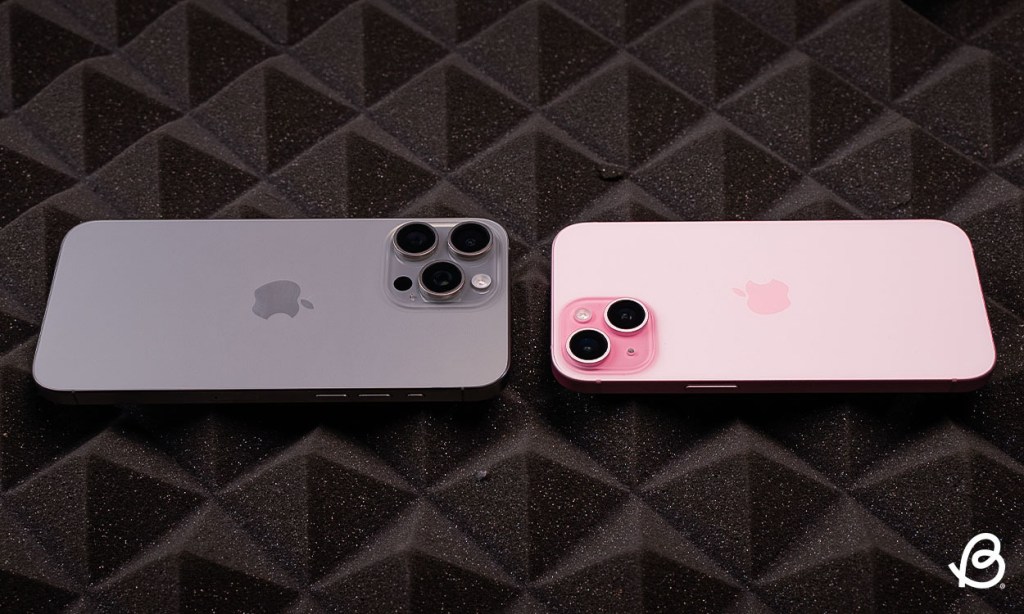
- iPhone 15 Release Date: September 22, 2023
The iPhone 15 lineup arrived with some of the biggest changes in the history of iPhones. The iPhone 15 and 15 Plus have several iPhone 14 Pro staples like a big camera boost with a 48MP primary sensor, a Dynamic Island, and an A16 Bionic chipset. Whereas, the iPhone 15 Pro and 15 Pro Max packed even much higher upgrades with the new Titanium frame, an insanely capable A17 Pro chipset, and a 5x Telephoto lens of the iPhone 15 Pro Max. Also, Apple replaced the classic Mute switch with a new Action Button that can perform a wide range of operations.
The biggest change Apple brought with the latest iPhone is the replacement of its proprietary Lightning charging connector with a USB-C port. Of course, the adoption of a more universal option was a huge deal and a forced decision that came from the EU’s common charger directive. It unifies the charging system across the Apple ecosystem and opens up a whole new world of USB-C accessories.
23. iPhone 16 Series
- iPhone 16 Release Date: September 9, 2023

The latest flagship iPhone, the iPhone 16 series grabbed all the eyeballs with some new changes, noteworthy upgrades, and new colors. The highlighting feature of the iPhone 16 models is the Apple Intelligence support and the brand-new Camera Control button. Rather than the diagonal camera, the iPhone 16 and iPhone 16 Plus feature a vertically aligned camera system with a pill-shaped camera bump that houses a 48MP Fusion camera and an upgraded 12MP ultra-wide camera with Autofocus and Macro photography. Also, the vanilla models have an Action Button, a brand-new A18 chipset, and upgraded 8GB RAM for faster performance.
The iPhone 16 Pro arrive with a bigger 6.3-inch display, whereas the iPhone 16 Pro Max is the largest iPhone ever with a massive 6.9-inch display. The Pro models are powered by an insanely capable A18 Pro chipset with Apple Intelligence support. On top of it, the Pro models boast some impressive camera upgrades. You’ll find an upgraded 48MP Fusion Camera with 4K@120fps vide recording, a new 48MP ultra-wide camera, and a 12 MP Telephoto lens. Just like the Pro Max, the Pro model also boasts a 5x telephoto lens. The new iPhone 16 Pro models offer faster Wi-Fi 7 support and an all-day battery life, among other things.
The entire iPhone 16 lineup arrives with iOS 18 features right out of the box. Apple Intelligence features will arrive with the iOS.1 update, which will be first available for US customers in October 2024.
Latest iPhone Models
As of September 2024, the following are the latest newest iPhone models:
- iPhone 16
- iPhone 16 Plus
- iPhone 16 Pro
- iPhone 16 Pro Max
Released in September 2024, the iPhone 16, iPhone 16 Plus, iPhone 16 Pro, and iPhone 16 Pro Max are the latest iPhone models at the time of writing this article.
Apple announced the latest iOS 18 at its WWDC 2024 Keynote event. It supports all iPhones released in 2018 or later. So, the oldest iPhone model still supported is the iPhone XR, XS, and XS Max released in 2018.
If Apple follows its regular pattern of release, the next iPhone will be released in September 2025.
Today’s Wordle Answer And Hints (September 28, 2024)
Anime Fantasy Codes (October 2024)
Will Kevin Costner Appear In Yellowstone Season 5 Part 2?


